Beginner’s Guide to Viewing Wildlife in Southeast Alaska
Author’s note: This post is the second in a series covering a Beginner’s Guide to Alaska. See the first installment, “Tip of the Iceberg” here. Stay tuned tomorrow for the next installment on Southeast Alaska’s landscapes.

Whale watching
Summers in Alaska are the best time to see the humpback whales. After giving birth to and nursing whale calves in the winter near Hawaii and Mexico, the whales travel back to feed themselves and their young in Alaska for the summer. Our many excursion guides told us that by this point, female humpbacks have lost at least 1/3 of their body weight. Their food consumption happens only in the summer when they are in the northern regions like Alaska, because as they journey back south and nurse their young, they are essentially fasting. Food in the southern latitudes is scarce for them, so all of their energies at that time are focused on breeding, giving birth, and nursing.
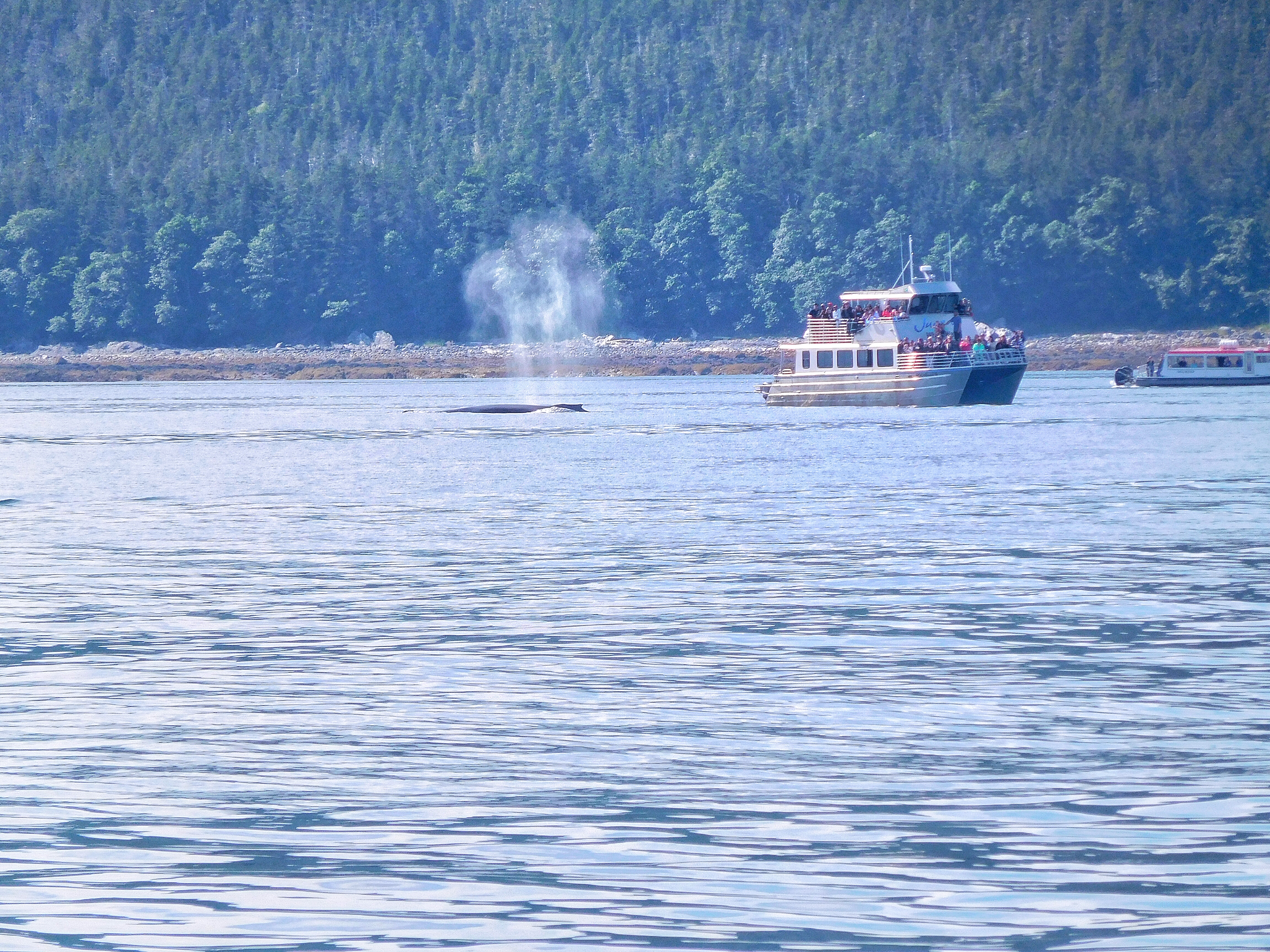
That means this journey back north by the mother humpback is incredible. She has been fasting for months while nursing, and it’s why feeding in the north is such an important task for her. It’s pretty much all the whales do, night and day during the summer. The waters here have become more temperate and are bountiful with krill, a key food source for these filter feeders.
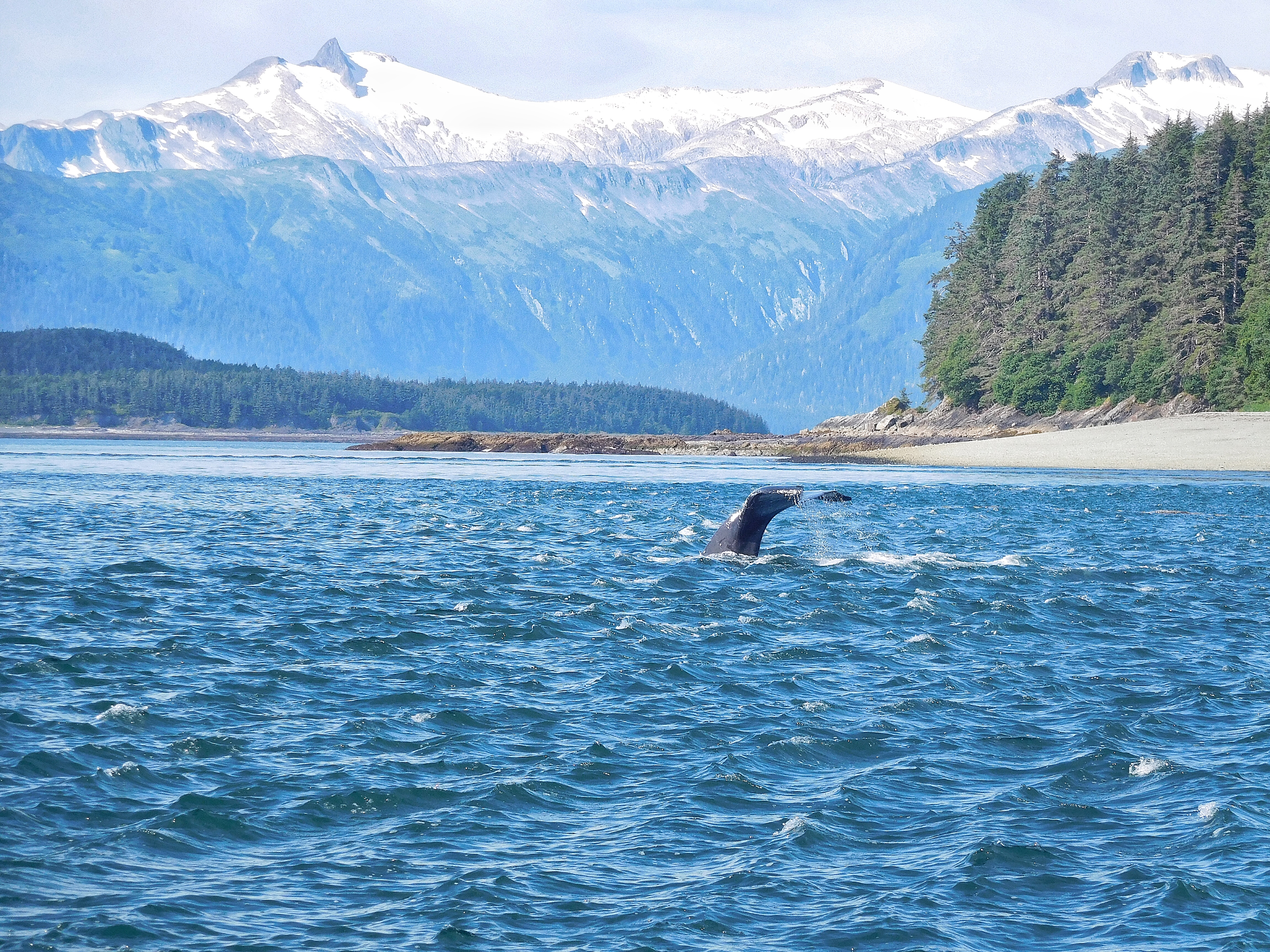
I can now say that I’ve seen humpback whales on both ends of their journey — in Hawaii where they breed, and in Alaska where they feed. Luckily, both times, I’ve also been able to see these majestic creatures breach— that moment when a whale jumps out of the water and splashes back in. Unfortunately, both times were only captured with my own eyes and not with a camera, because they happened so suddenly that I could neither reach for my camera in time nor snap the photo quickly enough. I suppose these moments will only be saved in my memory, and you’ll just have to believe me.

We saw whales during three of the four excursions we took while in Hoonah, Juneau and Ketchikan. One of the most impressive instances was in Juneau, which was swarming with whales. As we looked out across the channel in search of the telltale spray from the blowhole— one of the easiest ways to spot whales in the water— we noticed a plume just feet from our boat and a massive dark figure striding alongside and then under it. It reminded me of those fake photoshopped imaged on the Internet, portraying, from an aerial perspective, a blue whale swimming beneath a small paddle boat— except that this was real.
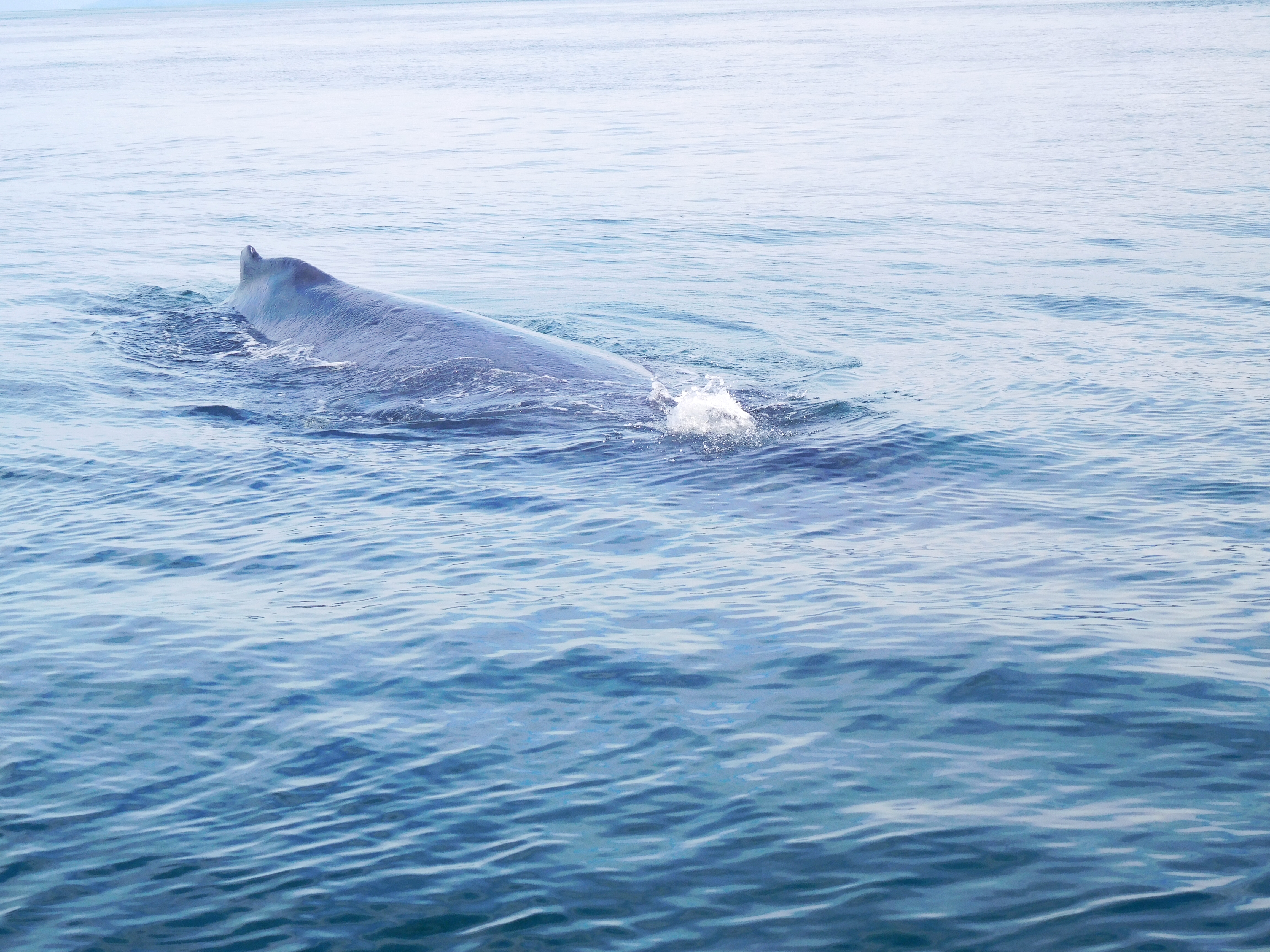
That excitement can only be matched by the morning on the cruise ship when I saw a humpback whale breach Alaskan waters. It was the same day we were to see the Hubbard Glacier from the ship. After waking up, I went to my parents’ stateroom, directly across from ours but slightly larger and with a balcony. Their curtains were open and we were all discussing our plans for the day— where we would camp out on deck to see the glacier, and what activities we would do onboard after. In the middle of our discussion, my mom’s eyes widened and she pointed out the window yelling, “Turn around, turn around!”
I turned, and saw through the window a massive gray animal jutting out of the water and splashing back in within seconds. It happened so fast, but I will never forget it.
Other Marine Life

Clearly, there is no dearth of wildlife in these waters, and you can see many of them right from the ship, though they are more easily viewed through the excursions from the towns where the ship docks.
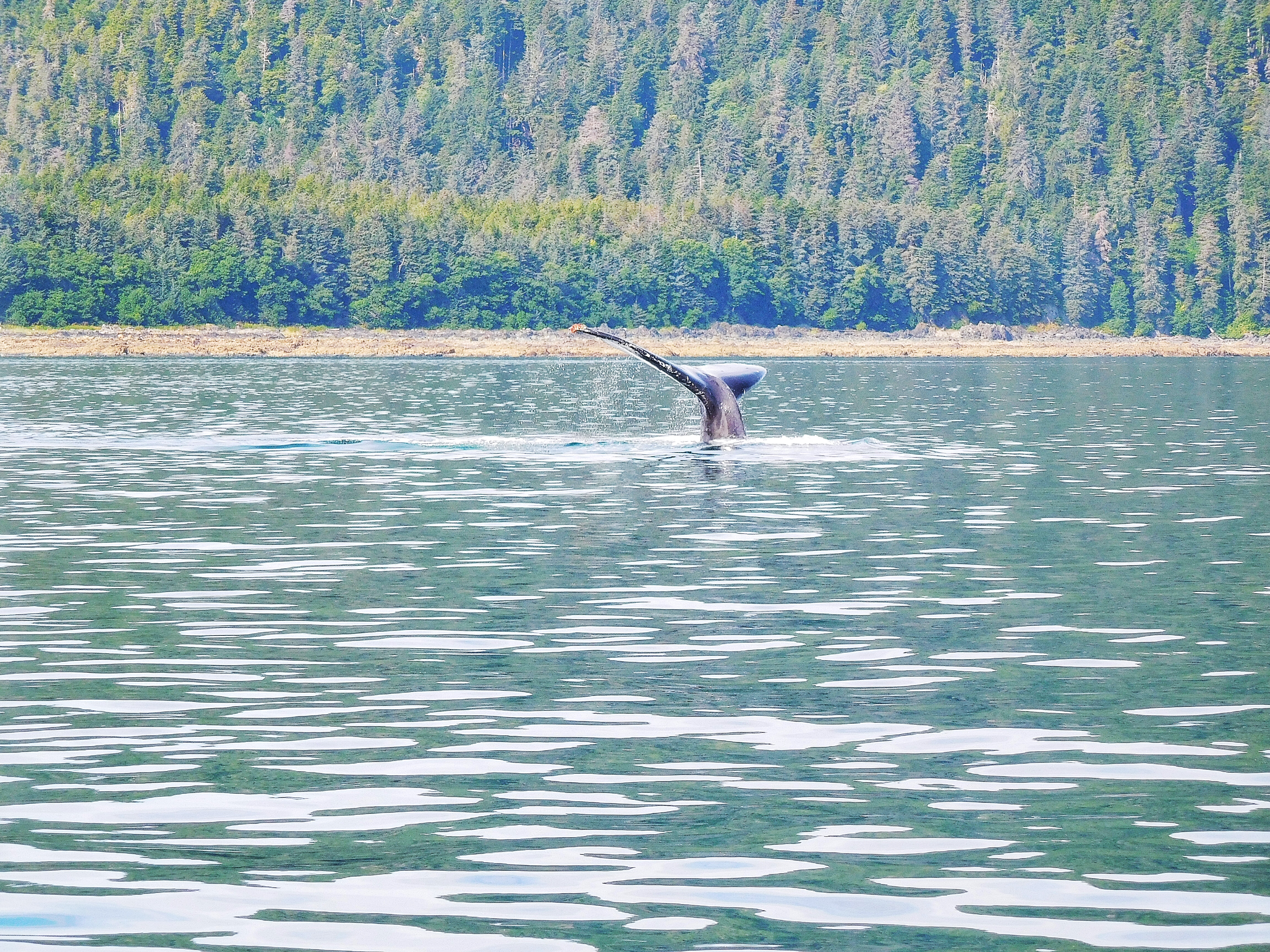
Onboard, as long as you sit patiently and look for breaks in the water, you can see porpoises, orcas, humpbacks and even salmon jumping from the sea. I would recommend getting a set of binoculars for such a trip. We didn’t purchase binoculars since my husbands’ camera zoom lens sufficed, and we were provided free binoculars to use on all of the excursions. However, you can purchase a pair onboard the cruise if you wish.
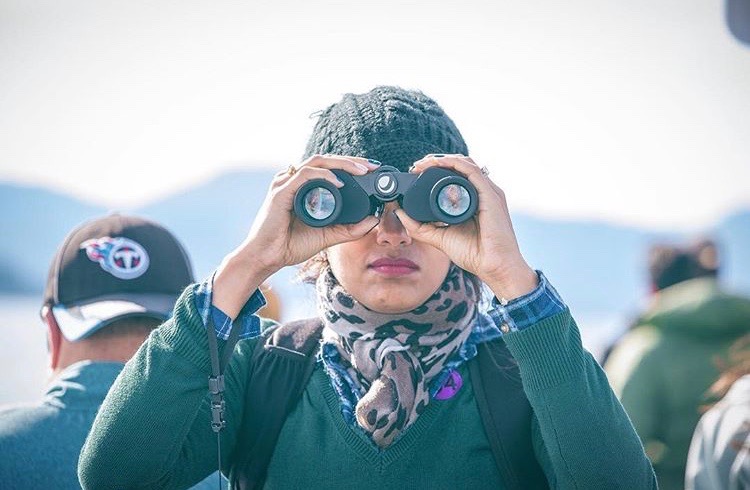
Off of the ship, during our stops in Hoonah, Juneau and Ketchikan, we used the smaller boat excursions to see the sea life a little closer— for better or worse. During another whale-watching tour in Juneau, we saw (and smelled) stellar sea lions lazing about on a channel marker. With all due respect for these animals, even a half-mile from where they were dozing, their stench was repugnant. They were slightly larger than I had imagined, too.

While searching for whales from the fishing village of Hoonah and in the Misty Fjords of Ketchikan, we saw a couple harbor seals and otters (cuddle party, anyone?), the latter floating on their backs temporarily before diving back down into the kelp forests along the coast to find food. They are not the only creatures drawn to Alaska’s shores in search of a meal.
Bears
High-calorie sockeye salmon are a favorite for the coastal brown bears. These bears are larger than their grizzly relatives in Yellowstone and Glacier National Parks (and possibly less aggressive as well) because in Wyoming and Montana the bears are competing more for both land and food, whereas in Alaska, space and food along the coast are more abundant.
By now, you know about my obsession with bears. Since I hadn’t (really) seen a grizzly earlier in the summer during our trips to Yellowstone and Grand Teton, I figured in Alaska I had a much higher chance. But again, I was thinking about the photos I had seen of Katmai and Denali National Parks. Here in southeast Alaska, there are some coastal brown bears, but on the land excursions, spotting black bears is more common, except for some places like Admiralty Island, which has the largest concentration of brown bears in North America.

Our greatest chance of spotting a bear on this vacation was probably in Juneau, along trails near Mendenhall Glacier, or if we had chosen to do an excursion to Admiralty Island, which we did not. Since by this point my family had grown weary of my obsession they felt excursions were better spent seeing other land attractions. Thus, we chose a photo safari tour that started with whale watching and then took us back to land to walk through the rain forests to a viewpoint of the Mendenhall Glacier. Along the trail, which crossed a small creek flourishing with red salmon, we got the putrid whiff of dead fish, finding the source buzzing under a veil of flies a few yards away. A bear had recently been here, apparently, and as my luck would have it, we had just missed a mother black bear and two cubs.
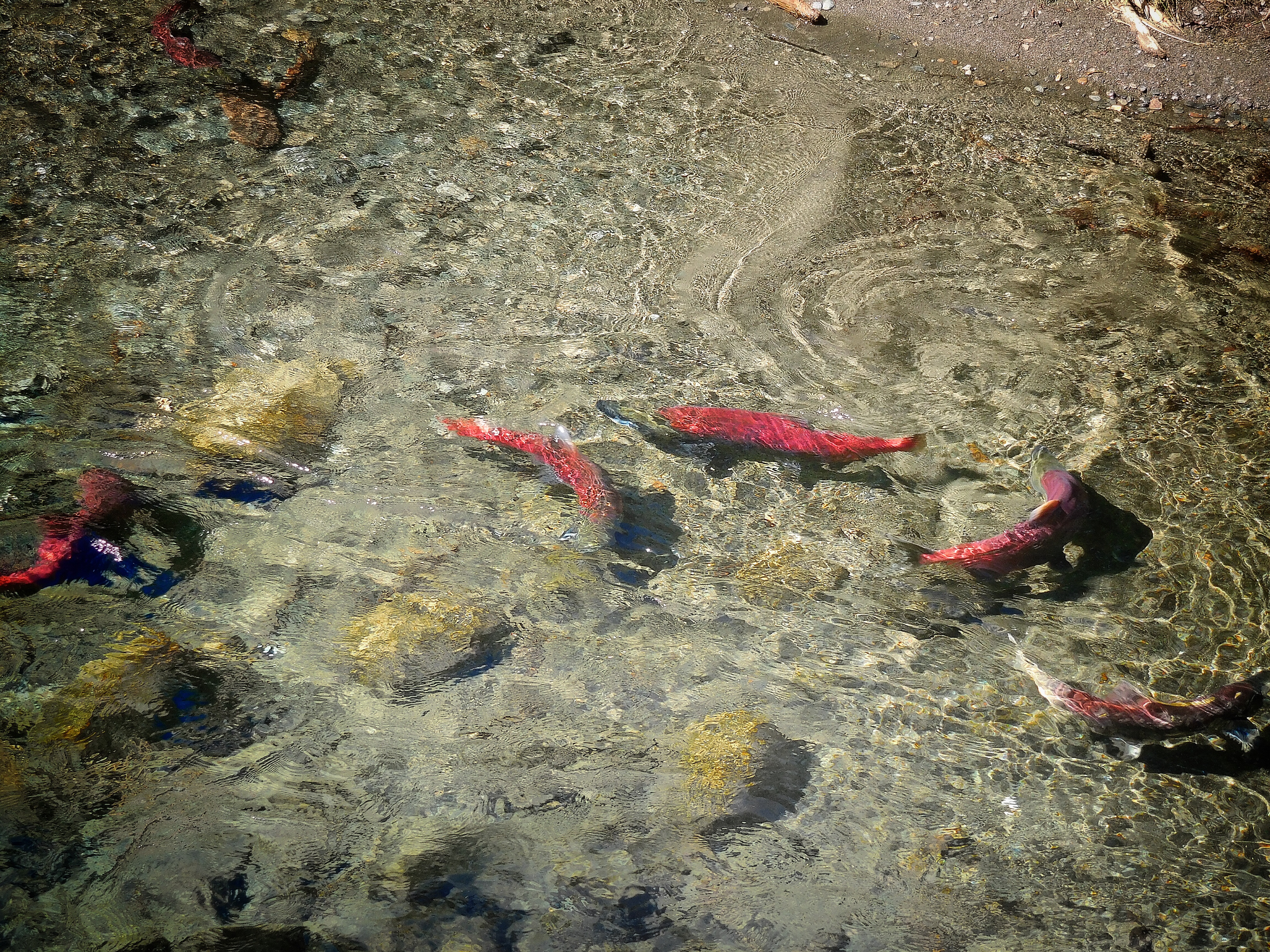
In these parts, bears wade in waters to catch salmon, and since there’s so much of it they can afford to “high-grade,” or eat only the fattiest parts of the fish and leave the half-eaten carcasses to rot. For the salmon, it’s a journey towards death, or I suppose, the circle of life and death. Salmon hatch, head to the sea, then migrate back from the sea to their natal waters to spawn, where they are subsequently eaten by bears or eventually die off after breeding. Here at the creek, a result of the retreated Mendenhall Glacier, they leave behind eggs to start the cycle of life all over again.
These life forms and landscapes in Alaska are varied and have been affected by glacial movements. In the retreating spaces of glaciers and from the winds that blow spores and seeds across ice fields emerge rich surrounding rainforests and lichen-cloaked cliffs…
[Up Next: Forests and Fjords: A Beginner’s Guide to Alaska’s Diverse Landscapes]
Related Posts
4 Comments
Comments are closed.











[…] Wildlife Viewing in Alaska: A Beginner’s Guide to America’s Last Frontier […]
[…] Guide to Alaska. See the previous two posts: “Tip of the Iceberg” and “Viewing Wildlife“. Stay tuned tomorrow for the last installment on the impenetrable Juneau Ice […]
[…] cruising through southeast Alaska. See the previous posts, “Tip of the Iceberg”, “Viewing Wildlife”, and “Forests & Fjords” […]
[…] Viewing Wildlife: A Beginner’s Guide to America’s Last Frontier […]